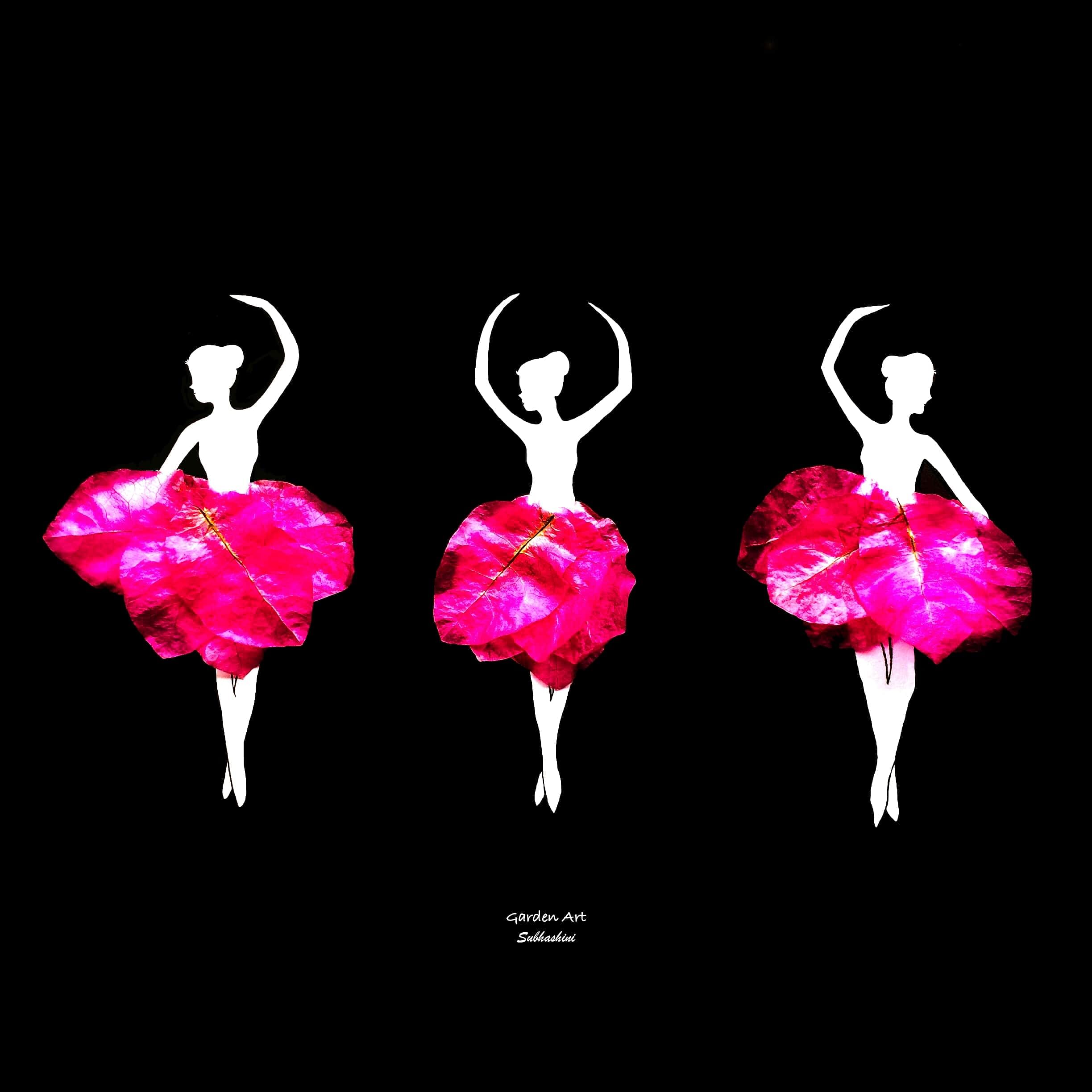
A Red Indian appears before me and speaks his native language, while three beautiful ballerinas dance with elegance. A scrumptious Onam sadhya awaits me, and of course, there is an instrument to play classical music. This collage of images is a conglomeration of colours, patterns and what is also known as ‘garden art’, and its connoisseur is the creative and talented Subhashini Chandramani.
Three years back, Subhashini’s poetic core started searching for an outlet and it happened through garden art. The poet with a passion for words and the photographer with an eye for macrophotography decided to experiment with something unusual to depict an idea. She was sketching a woman’s face and needed to finish the nose ring. Instead of a pencil, she chose a small bougainvillea flower and placed it on the sketch. The drawing transformed into an image with a 3D effect with the flower on it, and the result had a striking difference, an impact she hadn’t imagined earlier. Garden art was conceptually born.
Through the lens
A passionate macrophotographer, Subhashini had an eye for detail from the very beginning. Now, this worked to her advantage as she started picking common stuff from the kitchen, dried leaves, twigs and flowers, and placing them on each one of the drawings. “The child inside me came alive, an excitement and energy I could not control,” she says.
Blending static drawings and sketches through garden art lends itself to a plethora of ideas, concepts and hues. The crane came alive with a withered flower, peacocks came dancing by placing flowers and leaves in a pattern, and the list goes on. This also germinates the idea that the entire treasure trove of creativity exists in nature and is a gift of nature. It is up to each one of us to be inspired by nature and see its patterns and experience its richness.
The last three years have been eventful for Subhashini with a fan following that is growing by the day on Facebook and Instagram. These platforms have enabled her to step into the unknown world, where she can connect with people just through the medium of art, something unachievable otherwise.
Nurturing
It is a mentally exhaustive effort to create one piece of art. There are many technical aspects as well to consider. “Shadows form an integral part of the picture. Also, the time of the day when the natural light is at its peak is a key factor. Which elements of nature must be picked? The options are myriad. How does a small twig add a significant difference to the image? Which type and colour of flowers should be used? Nature is full of intricacies, lends itself to multiple interpretations each time I take up a work of art. Images start appearing before my eyes and then, I get to it,” she says. This is a different landscape, where colours, oils, barks, flowers, pastels and leaves form the language to communicate a simple or a complex idea.
Subhashini also has a beautiful outlook towards autumn. She believes the best nature stories come alive during the season. The shape of each dried leaf is unique, the colour of each fallen flower is different and beautiful, and it is a time for reminiscence.
Subhashini believes the best nature stories come alive during autumn. The shape of each dried leaf is unique, the colour of each fallen flower is different and beautiful, and it is a time for reminiscence.
She has created over 350 works of art to date and is grateful for the support she gets from her husband, son and mother. They have ensured she can peacefully be in her space and create as much as she can and wants to.
Apart from having an inclination towards anything art, and some specific skills, what a person needs to create a work of art are childlike innocence and curiosity, a quest to discover and explore, and the ability to stand and stare.
There are many opportunities to juxtapose colours, lights and shade, natural elements, and you can literally “paint with flowers.”
This is only the beginning and there’s a long way to go for Subhashini.